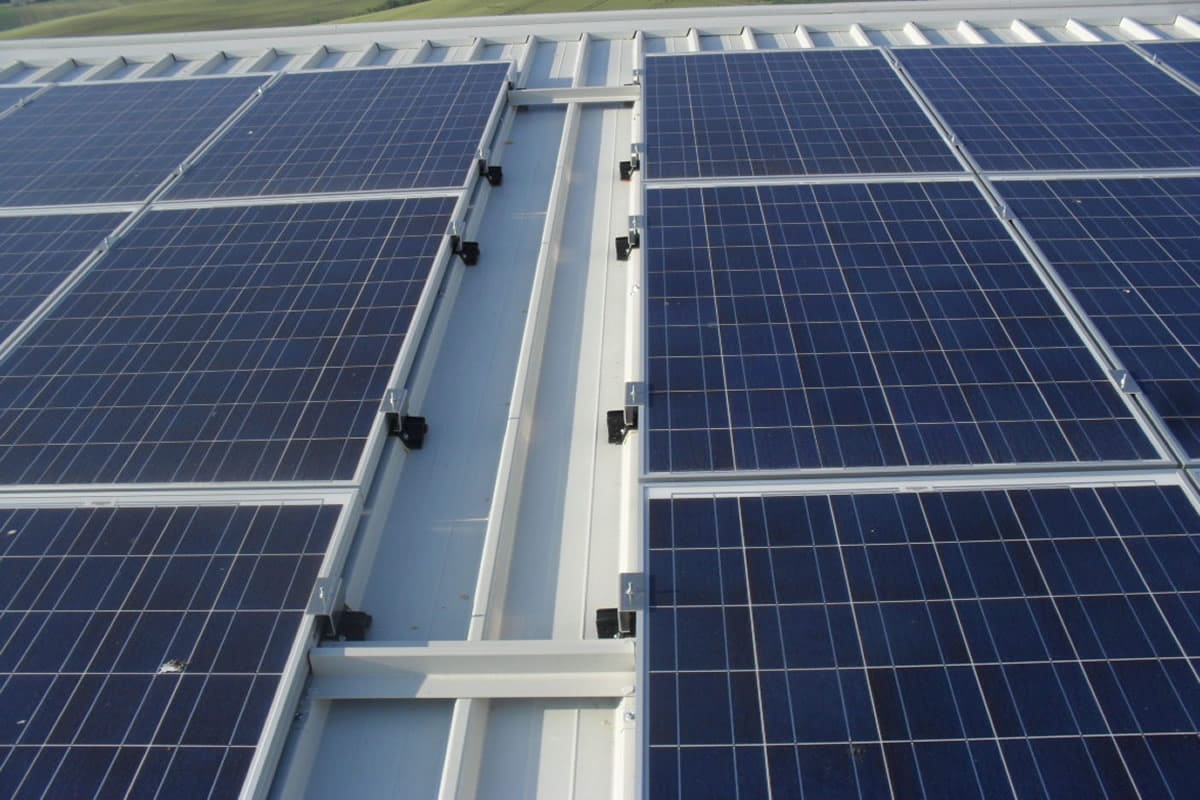For flat roofs, structures are provided that raise the photovoltaic panels and ensure the proper inclination. The main options include plastic ballasts for flat roofs and tilters.
Plastic ballasts for flat roofs are ideal for ensuring the necessary stability and mounting without drilling into the roof. Made of plastic, they are lightweight structures, which reduces transportation costs and imposes less weight on the roof compared to traditional concrete ballasts.
Tilters, on the other hand, are ultra-light adjustable systems that allow the panels to be oriented towards the sun, maximizing energy efficiency. They are anchored to the roof with a layer of cement mortar, and the panels are installed together with plastic profiles.

